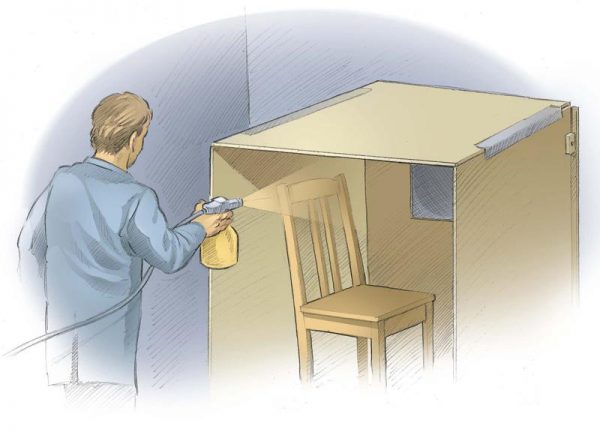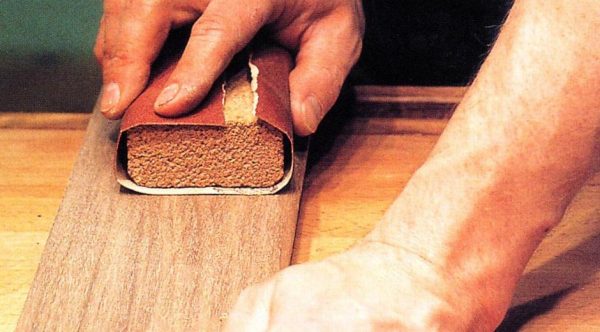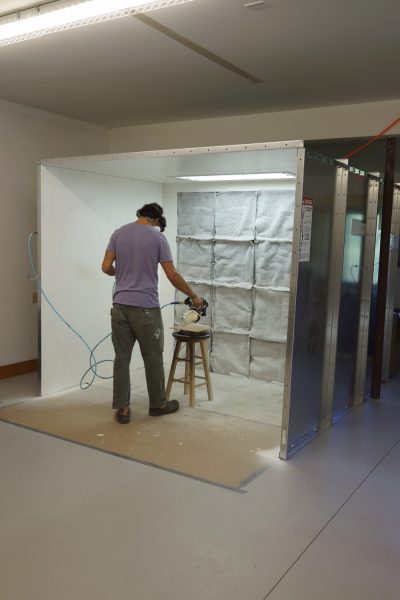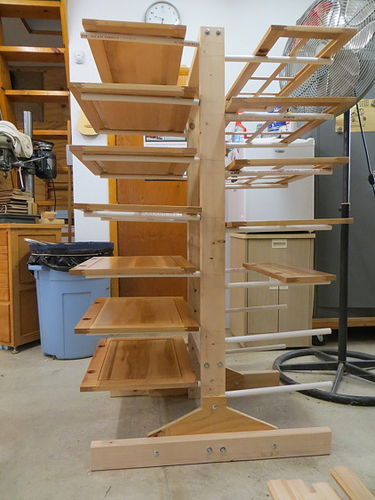The other day I was talking to someone who is planning to start finishing wood. He's about to start testing some products and came to tell me what stage he's at with the landscaping. He asked for my advice on some aspects of where the staining and varnishing will be done and what fixtures are needed. I think this is a topic that may be of interest to many, so here are a few tips on the layout of the space and the strictly necessary supplies.

It's good to know from the start that finishing can add value to an object, but it can also spoil it. Imagine you've made a beautiful wardrobe out of oak, which everyone looks at with admiration, then finish it. Get a wardrobe with petewith lake scumand the film scratches when you run your hand over it. Do you think anyone else will notice the beauty of oak? I want to be very clear, I don't want to overstate the importance of lacquer. Furniture has been around long before they came along. In the countryside, tables and chairs are still made well gelled (sanded very well) and used without varnish. But in order to protect the wood, to bring out its natural design through staining and varnishing, the right materials and equipment should be used and the necessary fittings should be in place.

A first tip is to separate the space for mechanical processing from that for varnishing and drying. Dust from machining is the biggest enemy of the finish. The film will embed the dust and become rough. If a gloss finish is desired, even if it is not a mirror finish, this can only be achieved by polishing.
- If you have the opportunity to do the finished place in another building, don't hesitate. In time you will see that it was the best choice.
Sand the wood very well in white because the finish highlights all the flaws.
- Provide a special place to do this away from the finishing area. If you can provide dust extraction in the area it would be the best investment.
- Use the recommended grit for sanding wood (100, 120,..., max 220). Paper that is too fine fails to break the grain of the wood and when you apply the sanding bath or primer, the grain will rise and it will be more difficult to remove. In addition, the surface and pores fill with very fine dust and staining or lack of adhesion can occur.
- Don't hesitate to change the paper when it becomes clogged or when the abrasive starts to disappear. You think you're saving money, but you'll only create problems later. The sanding will not be well done and defects will appear as soon as you start finishing

If you are going to spray the materials, buy good guns. Don't think of spending a large sum on one gun and rather buy several with the same money. Cheap pistols don't always break down completely, so change them and you won't have any problems. They break down slowly, slowly - the nozzle gets bigger, the seals widen, the compressed air intake changes over time - and you find that you don't have the same quality of finish as when you started. You get spills, film breaks or unevenness, stains when coloring, or other defects that you need to fix and that will cost you. Knowing the pros and cons of the most commonly used spray systems will help you to know how to choose your spray gun appropriate.
- If you also use water-based and solvent-based products, get 2 guns, one for each type of material. You'll save the cost by saving on washing thinner and avoiding defects when switching from one system to another.
- If you're doing finishes that involve applying ageing skids, get special guns. Apply a smaller quantity and save money, because these materials are quite expensive.

Invest in a spray booth or absorbent wall. This will remove the varnish particles that remain in the air when spraying and fall onto the part, gassing the film. A gassed film scratches and looks unpleasant.

Arrange where the finished products will be dried. Place the rasps with the arms covered in rubber (use a hose to size) so as not to scratch the piece.
- If you use water soluble products make sure that there is air circulation in the drying area. When drying these products, air movement is more important than temperature.

Use good finishing products.
- Establish a relationship with a varnish and paint supplier for quality and continuity. Ask for technical data sheets and technologies products and follow the directions.
- When you order a new product, say what you want to get for it. It may be that the product you have in mind is not the best and you may get a better recommendation.
- If you're not sure how to use a product or about its quality, talk to the person you bought it from immediately. It's easier and cheaper to prevent than to fix.
Do not disarm if it seems difficult. They all started that way, things are learned gradually.
- Seek advice and help from your partners - suppliers of equipment, materials and accessories
I'm sure there are many other things I could think of, but I already think this is too much. But the subject can always be added to. If in the meantime you find other useful tips for such a start, please write in. I am sure they will be appreciated by everyone.




































Dear Madam, I am interested in treating wood with sodium silicate and cedar oil.
In a few days the article about treating wood with sodium silicate will appear. Watch the magazine! 🙂
Handshake, do you know how to recondition an oak door that has started to peel? There are some cavities on it. What solutions to buy and how to do it?
Thank you very much
Chivu Iulian, Teleorman
Here the biggest problem is tooth decay. You should remove the finish coat with a stripper (I found it in DIY stores). Apply it, let it attack the coat (soften) and remove with a spackle. After complete removal sand with 150-180 grit paper and refinish.
But before refinishing you need to get rid of the curries. It's quite hard. There are such materials in online stores. Search for "wood decay solutions". They'll give you treatment instructions. You have to repeat the treatment 2-3 times to be sure you've killed them. They are very hardy animals.
Good luck!
Hello,
Can you recommend me (from the offer of the partner company) some primer (possibly also paint) for the MDF edges to possibly fill some imperfections. I only have to paint MDF edges and it never comes out right... It doesn't matter what the base is as long as you can sand this primer easily before final painting.
Thank you
Thank you I found it!